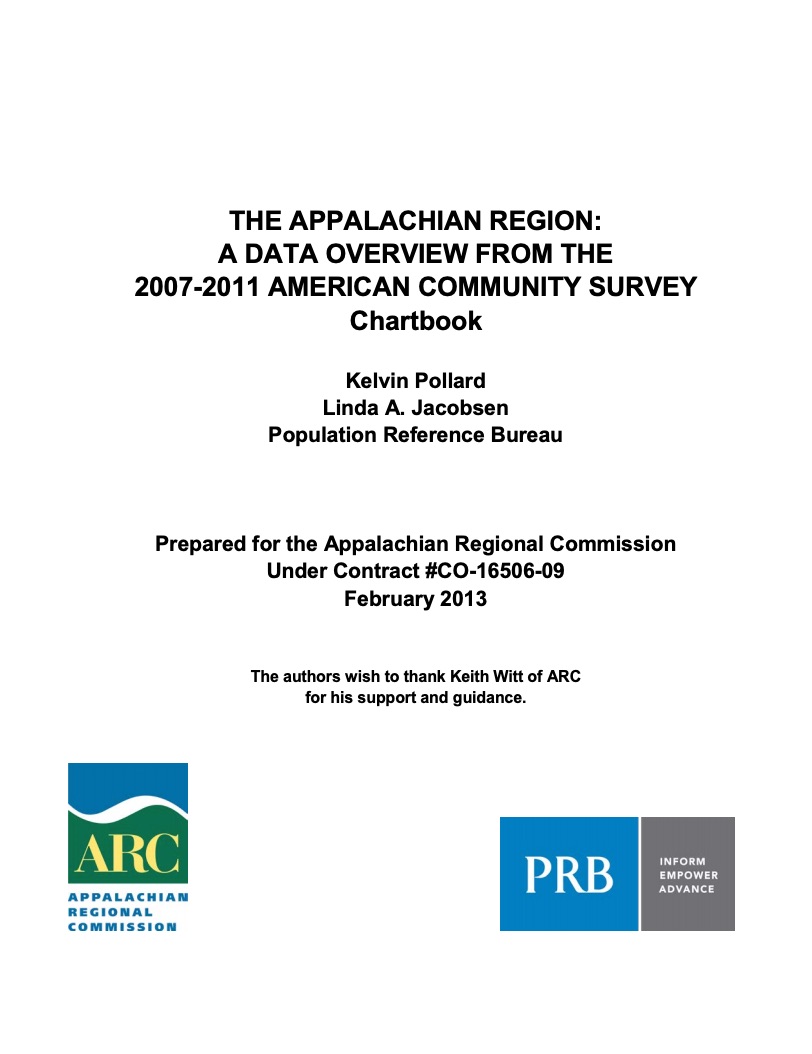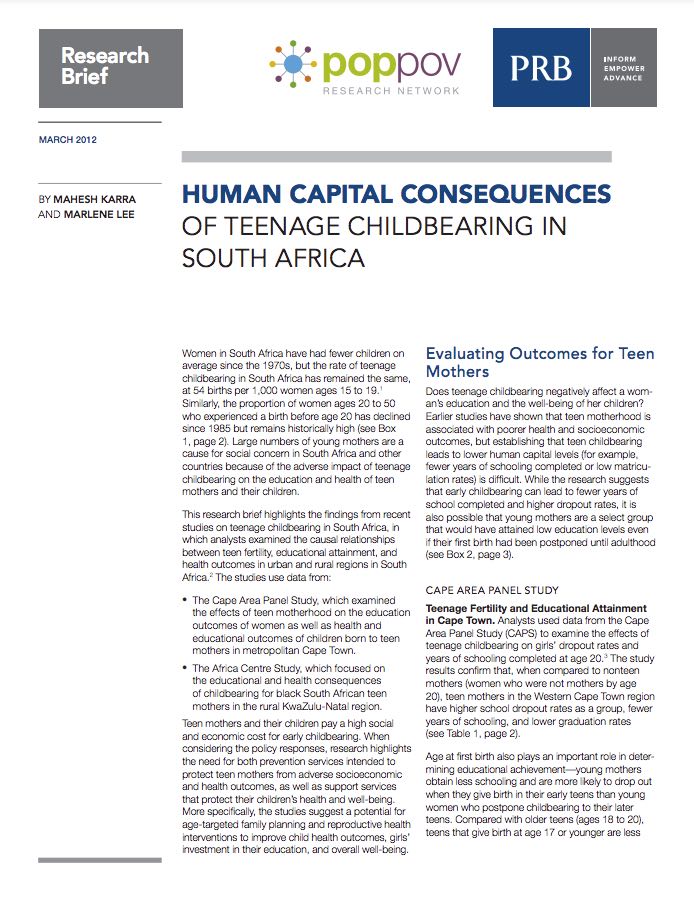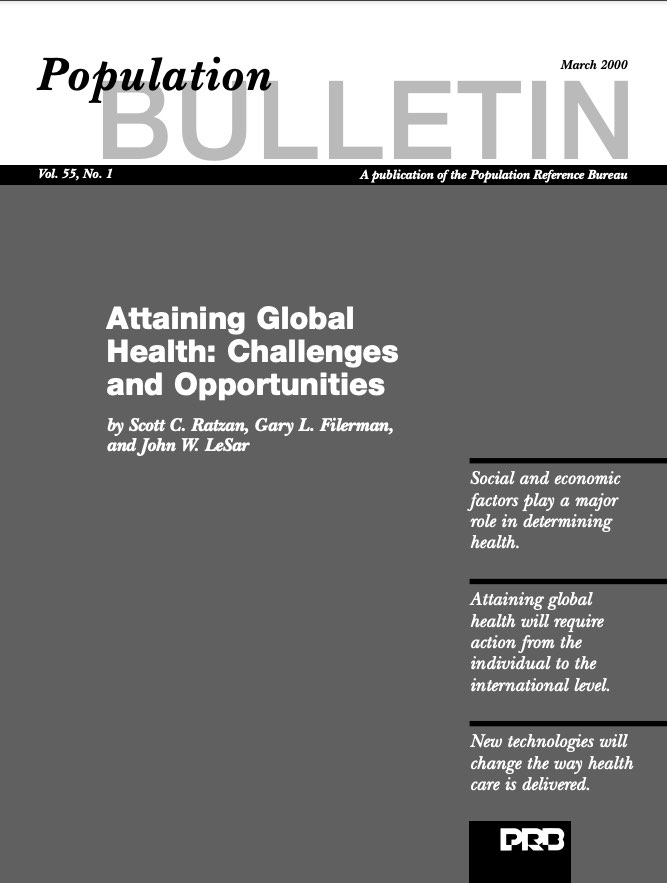What Investment Offers a 60-Fold Return? Food Stamps
For the youngest Americans, $1 of SNAP payments generates $62+ in economic and health benefits.

For the youngest Americans, $1 of SNAP payments generates $62+ in economic and health benefits.

Project: Appalachia: Demographic and Socioeconomic Trends
(2013) Appalachia's residents remain older, less educated, and less racially diverse than the United States as a whole, but those demographic and socioeconomic patterns vary widely within the region, according to The Appalachian Region: A Data Overview From the 2007-2011 American Community Survey, prepared by the Population Reference Bureau for the Appalachian Regional Commission.
(2010) During the current U.S. recession, homeownership and mobility rates have dropped; poverty has increased; and commuting patterns have shifted toward greener, more cost-effective options.

Mark Mather from our U.S. Programs team looks back at key population trends since he joined PRB in 1998.
(2007) This is part of a series of PRB articles about the science and engineering (S&E) workforce in the United States, funded by the Alfred P. Sloan Foundation. Additional state-level data on the S&E labor force will be available this spring, in PRB’s 2007 U.S. Population Data Sheet.

(2012) Women in South Africa have had fewer children on average since the 1970s, but the rate of teenage childbearing in South Africa has remained the same, at 54 births per 1,000 women ages 15 to 19.

(2000) The 20th century witnessed a revolution in human health and well-being. Average life expectancy at birth in many industrialized countries nearly doubled from around 45 years in 1900 to more than 70 years in 1999.

Project: Appalachia: Demographic and Socioeconomic Trends
Longstanding vulnerabilities suggest that some groups in Appalachia risk greater hardship related to the COVID-19 pandemic.
(2013) When it comes to education beyond high school in the United States, fewer males than females, fewer young people from low-income than high-income families, and a smaller share of blacks and Hispanics than whites and Asians tend to enroll and earn degrees.
(2014) A growing share of Americans are working beyond their 65th birthdays, a reversal that began about 25 years ago (see figure). This upswing appears likely to continue as more members of the baby-boom generation (born between 1946 and 1964) reach traditional retirement ages.